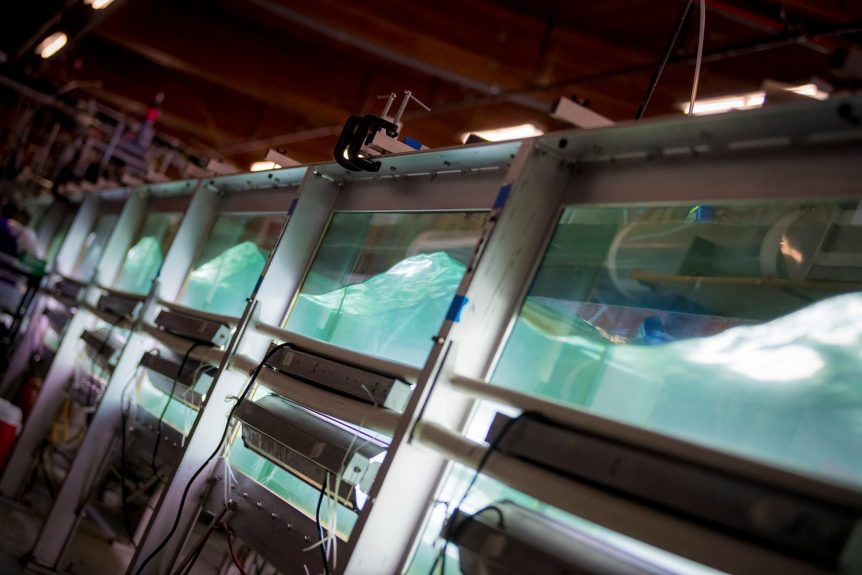This ain’t my first rodeo, as they say, but I love it just the same and I still have so much to learn. That sums up my feelings about SeaSCAPE. I participated in my first wave flume study of sea spray aerosols in the Scripps Institution of Oceanography Hydraulics Laboratory in 2011, and then again in 2014. We were blown away at the possibilities for studying the production and properties of nascent sea spray particles. I was blown away by the ability to isolate oceanic emission of ice nucleating particles, or INPs, which have an outsized ability to transform clouds and precipitation due to the action of very small numbers of ice crystals on scavenging water vapor and transforming otherwise stable populations of supercooled cloud droplets into larger ice crystals that sediment and bring water to the surface as snow or rain.
Do you think that all water freezes at 0 °C? You are wrong then, as Tom Hill, my colleague and also a SeaSCAPE participant, will enthusiastically tell you. Pure water distributed in the volumes present in clouds will not freeze spontaneously until close to -40 °C, and otherwise freezing must be initiated by a particle (an INP) present in the water. This makes them special and powerful.
Ice nucleation is my thing, and the INPs that come from oceans are both unique and vitally important amongst the atmospheric populations (mineral dust being the most well-known) of INPs. Oceanic INPs emitted via sea spray production mechanisms are wholly organic, unless the near-surface ocean has been seeded by terrestrial emissions. While we know that SSA INPs emanate both from dissolved and particulate carbon compartments in varying proportions, we do not yet understand these sources chemically to the degree necessary for accurately predicting their emissions using large scale coupled ocean-atmosphere models. Yet this is critically important for understanding influences on clouds over vast remote oceans that control both the amount of solar energy reaching the ocean surface or scattered to space, and the global hydrological cycle.

During SeaSCAPE, our team of Kathryn Moore, Russell Perkins, Thomas Hill, summer student Josephine Rudd and myself will use real-time and offline techniques, in concert with our collaborators in the Grassian, Tivanski, and Stone groups, to further isolate the chemical compositions that constitute the few (“needles in the haystack”) INPs present in SSA. Furthermore, we will seek to understand the fate of these particles following atmospheric oxidation that will occur following emission, using flow reactors.
I am energized once again in seeing and working in a laboratory full of young scientists. They are learning together with career scientists. Learning about discovery, the process as much as any success, learning to work within a team, learning about the value of patience and persistence. These are the days you will remember.
Written by: Paul DeMott, Senior Research Scientist, Dept. of Atmospheric Science, Colorado State University
Header photo credit: Erik Jepsen/UC San Diego Publications

